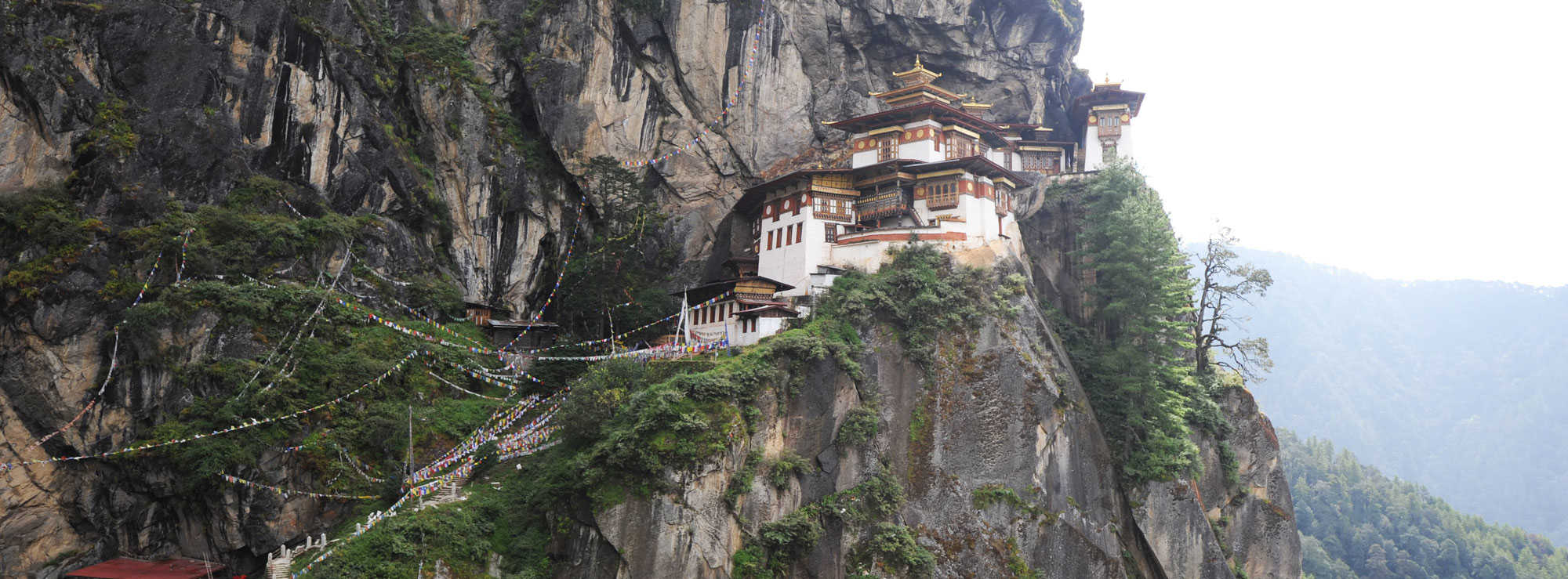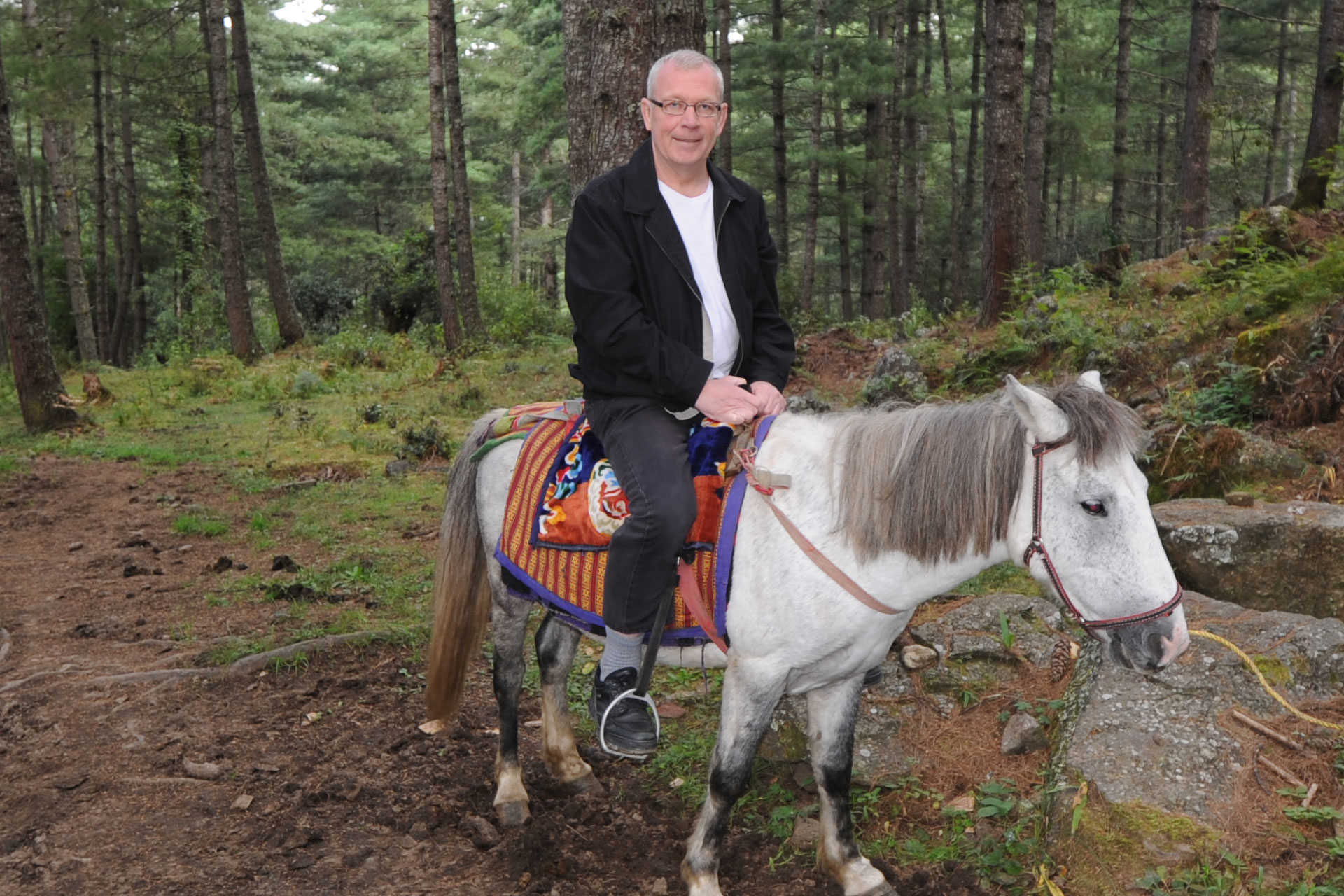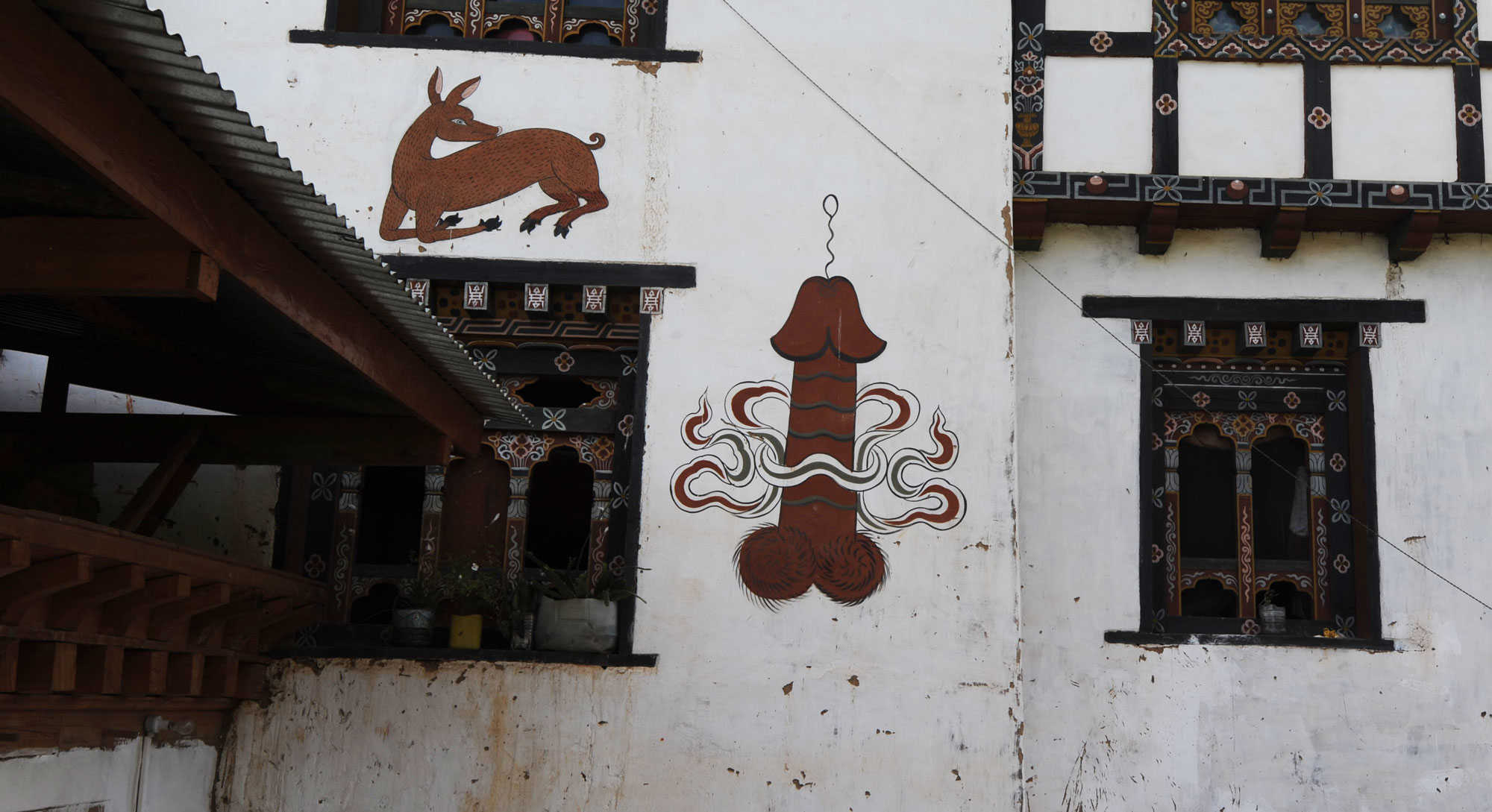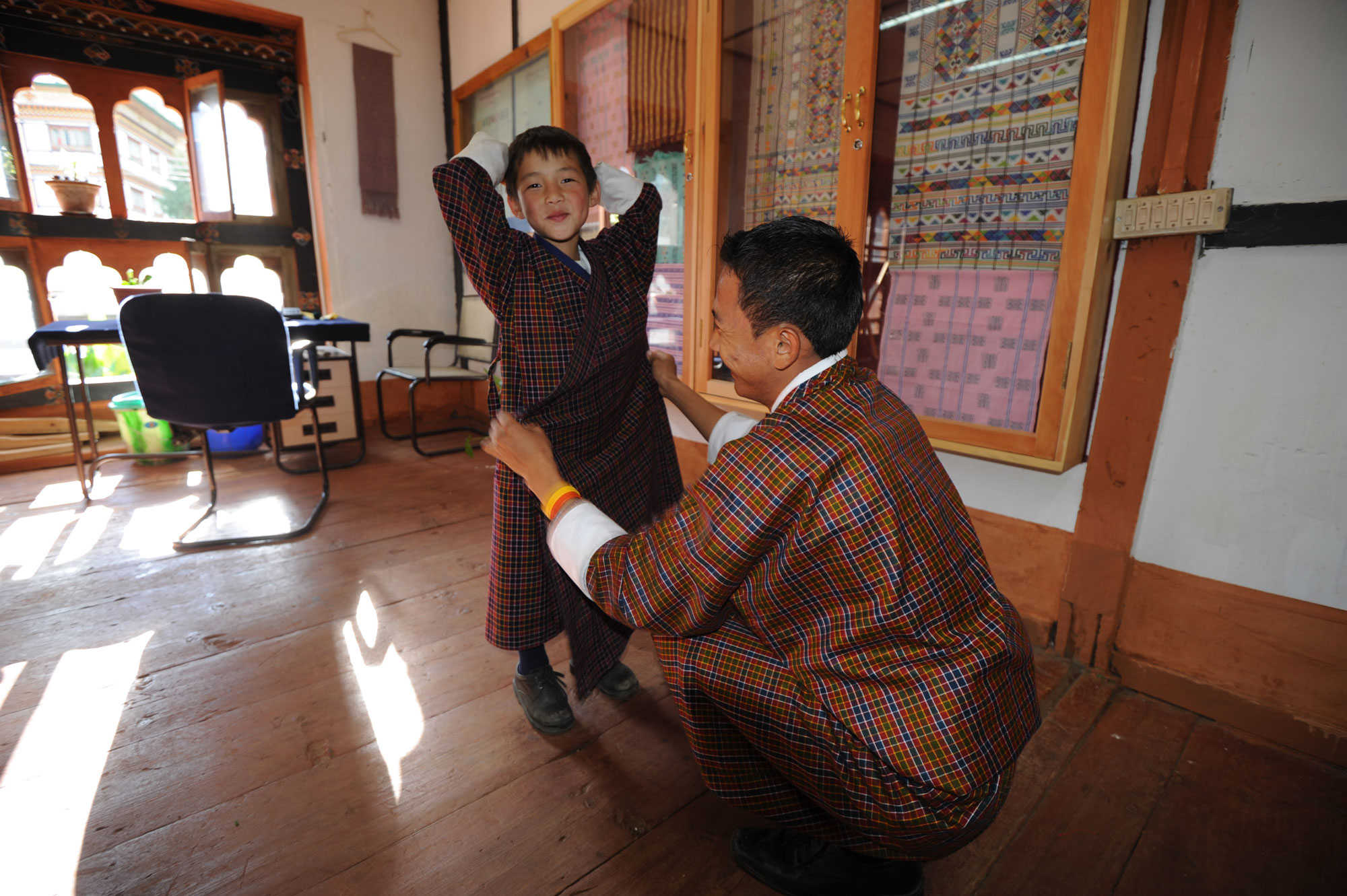The Land of the Dragon King
A visit to Bhutan
The legend states that Guru Padmasambhava many centuries ago came flying on the back of a female tiger from the eastern part of Bhutan and landed in a cave in the mountain wall 900 meters straight above the valley. The purpose was to tame a demon. Around 800 years later, once in the late 1600s, the local governor decided that a temple and monastery were to be built on that very spot, high up in the mountain wall.
The monastery is still there. And when enveloped in mist, as it often is, it becomes the very symbol of the mystery the embodies the country Bhutan. But today, you don’t travel on the back of a tiger, flying up to the holy place. Now the horseback takes you through the hills for an hour, and when horses no longer can carry you, it is only your own feet that will carry you another around sixty minutes that it takes to complete the journey to the monastery hanging on the edge of the cliff.
Tak tshang monastery has become the very symbol of Bhutan, often referred to as the mysterious kingdom of the Himalayas. Mysterious because the country is surrounded by religion in the form of monasteries and temples, mysterious also because Bhutan is not flooded by tourists. The reason for the latter is the price of entering the country. Only groups are allowed in, but the group may only consist of – yourself. It's not only the mountains that reach sky-high, the prices do too. More than $ 200 a day is what your pocket will have to dispense of if you are in a group. Even more so, if you as this traveller: make up the entire group by yourself.
Despite stiff prices, tourism is the second largest "export" article in the country. Second only to the sales of electricity to India. The plan, according to Bhutan's tourist council, is to be able to accommodate 100,000 tourists a year in a couple of years.
The Tak tshang monastery is also called the Tiger’s Nest. Even if you get tired from sitting on a horseback and climbing steep hills with your feet, the trip is worth it. I got up at the crack of dawn after ordering a taxi the night before, and after about half an hour's drive from the town of Paro, the hardship begins. This way you will arrive at the monastery before the "hordes" of other visitors come. What awaits you is a breath-taking view. The monastery is literally set into the mountains, almost a thousand metres up the mountain side above the Paro Valley. And luckily, these days you can pick up your smartphone, snap and send pictures home to aunts and grandmothers. And, of course, even make a posting on Twitter or Facebook if so desired. Here you have the mobile coverage even one kilometre up the mountain side and two hours’ walk from the nearest village.
Tak Tshang monastery is an attraction, but there are also a number of other attractions in the country. Most of them of a religious nature. And since your itinerary must be decided well in advance, our obligatory guide and driver take me to the attractions we have previously picked up from digital brochures. Most Bhutanese worship Buddha, as well as Guru Padmasambhava and a number of other lamas and monks. In the olden days, the monasteries were not only centres of religious power but also political.
The ancient capital of Punakha, which is no more than the monastery "The Great Success Castle" from 1637, lies where the two rivers Phon Chu and Mo Chu meet – three hours’ drive from the modern capital of Thimphu. The road goes up and down, over a mountain pass, into the fog and out again, and finally into a fertile and beautiful valley. Not far away is another monastery, Wangdue Phodrang, strategically located on top of a cliff high above the merged river of Pho Chu and Mo Chu.
Between the two great monasteries lies the fertility monastery - in a fertile valley. In the villages around this monastery, people have mounted giant penises over the front door, or they have a painted one on the wall of the house. It will drive away evil spirits. Monastery visits also become our main occupation the two days we are away from the capital and on tour "around the country". We get free entrance to the temples, but it is because we have paid a hefty price as the entrance fee to the country.
Today, the young king tries to make the country modern and democratic, even though he has the final word. There have been elections, albeit only municipal council. This is because the people are slowly hurrying to learn democracy from scratch, as it's called in official documents. But the Bhutanese must keep their traditions. Should a local visit a public office, he cannot turn up in ragged jeans. He must dress up in the national costume, which for men is called gho. It's a cloth folded around the waist and they do not wear underpants. It is used summer and winter. And winter can be cold in Bhutan, coldest ever recorded in Thimphu is minus 21 centigrades.
Still, gross national happiness counts more than gross national product. People in Bhutan are actually the happiest people in Asia according to the government. The term "gross national happiness" was invented by King Jigme Singve Wangchuk in 1972, and is continued by son and grandson – the present King Jigme Khesar Namgyel. It so happens that all political projects in the country must have a happiness impact assessment. But happiness does not apply to all, at least not for those of ethnic Nepal origin. They have been kicked out of the country, almost each and every one, and now spend their time in refugee camps in Nepal, unless they have been give refuge in a third country.
Most of the tourists (as there are a few thousand of a year) arrive by air, almost like the Guru Padmasambhava more than a thousand years ago. Not on the back of a tiger, but with Druk Airways - the national airline, the proud owner of two Airbus 320 and the only company flying at the country's (international) airport. The airport of Paro is described as one of the most dangerous in the world to land on according the Virgin Media website. It is not the landing strip that is so scary, but the high mountains and wind conditions that require some extra of the pilots. But the pilot on our Airbus 320 from Kathmandu managed well, even though we felt that the pine trees almost shaved the wings when landing.
The country has a total ban on smoking in public places, hotels and restaurants - and tobacco sales are not allowed. If you need nicotine, ask your driver to stop along the country road. But as it says in the tourist brochure: people in Bhutan are very tolerant of people from the West. So, if the smoke was going to make you a criminal, you might just get smiles as a warning. In the name of the tolerance.
[October 2010]




